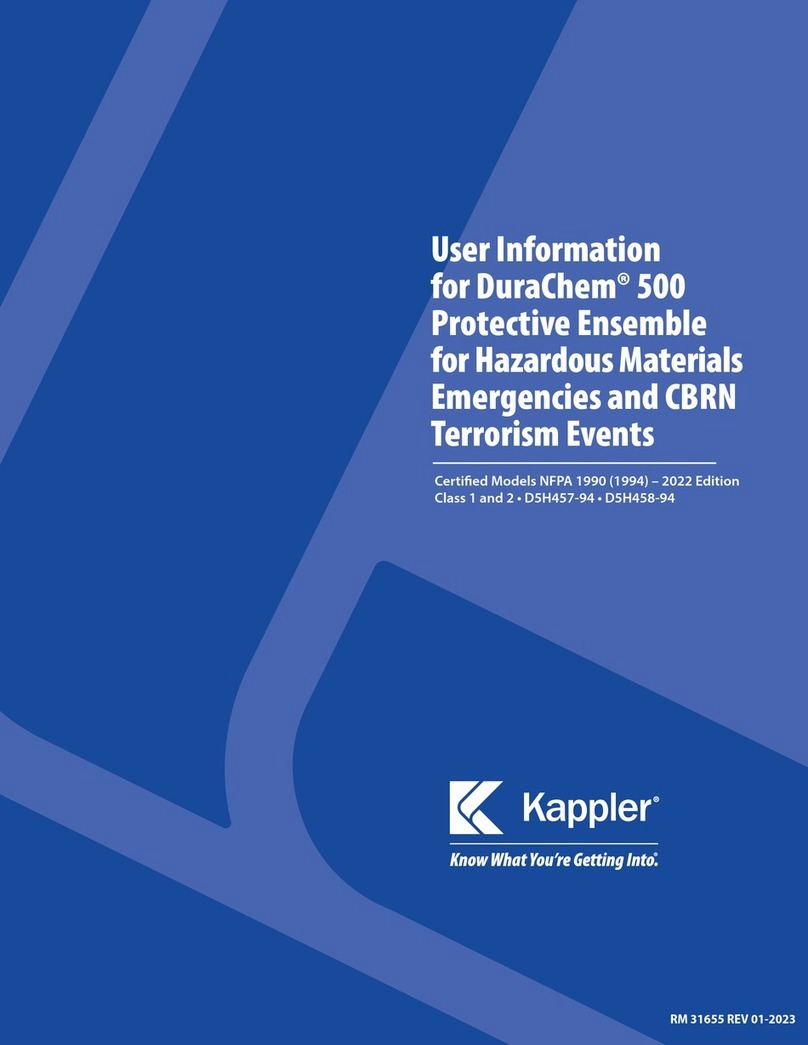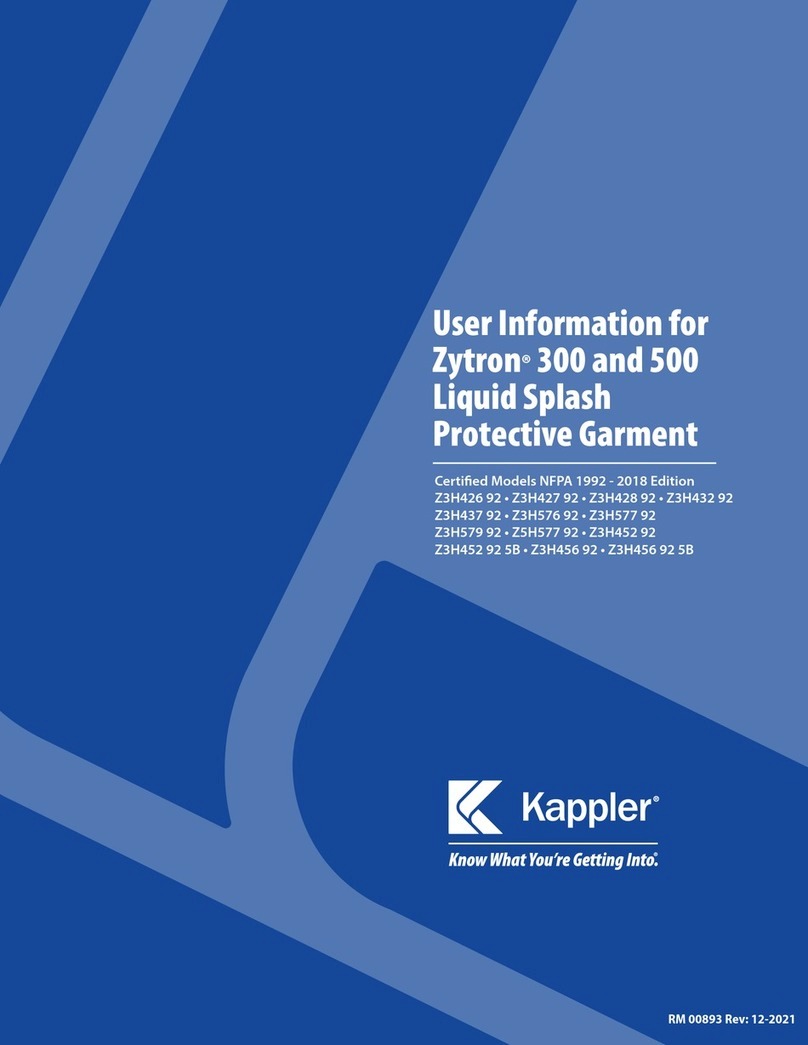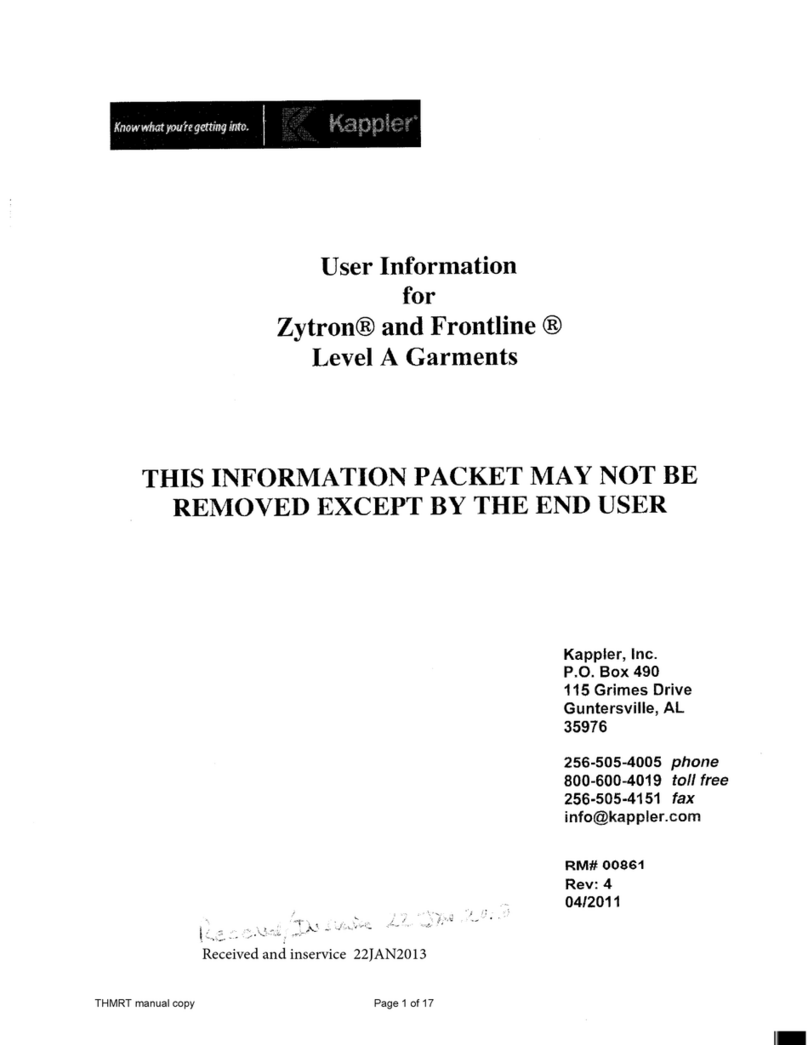
Manage and Prevent Heat Stress
This garment interferes with the natural regulation of body temperature. This can lead to a rise
in core body temperature and heat stress. The wearer should be aware of the symptoms and
treatment of heat stress. The wearer can take several steps to limit and/or prevent heat stress,
such as use of a cooling system, and working in accordance with a conservative work/rest
schedule. The maximum time the garment can be worn depends on such variables as the air
supply, ambient condition, climate inside the garment, physical and psychological condition of
the wearer, work rate and work load. The TLV™ pocket guide from the American Conference of
Governmental Industrial Hygienists (ACGIH, Cincinnati) provides corrected heat stress limits for
totally encapsulating garments. Similar information is available on the federal OSHA website
(www.OSHA.gov).
Chemical Permeation Data
Before using a garment in a chemical situation, consult the chemical permeation data
appropriate to the garment material. This information is to be used as a guide only. The
permeation performance of any material depends on a number of factors including chemical
concentration, temperature, time and amount of exposure, etc. Due to the large number of
variables, it is impossible for all garment materials to be tested against all chemicals, all
combinations or mixtures, and all temperatures at which the chemical might be encountered.
Chemical permeation tests are performed under laboratory conditions -- not actual workplace
conditions. They address chemical breakthrough characteristics and do not account for physical
performance characteristics that affect barrier such as abrasion, flex fatigue, puncture, tear,
oxidative degradation, or degraded performance due to previous contamination.
No single protective material will protect against all chemicals for all situations. The best course
of action is to test the primary garment materials against the specific chemical hazard, at the
temperature and in the concentrations to be encountered. Kappler will provide free swatches of
primary garment materials for testing and help arrange to have these tests performed.
Static Electricity
Under certain conditions, such as cold and dry weather, it is possible for garments to build and
discharge static electricity. Discharges are not normally dangerous except in situations where
generation of an electrical spark could ignite a flammable atmosphere. When operating around
flammable chemicals, steps to eliminate potential static discharges should be used. In these
situations, additional actions can be taken, such as increasing the humidity level of the work
area and/or using a commercial anti-static application.
However, in the case of explosive or flammable atmospheres, even if sophisticated and
elaborate steps are taken to manage static formation and dissipate static charge, this garment
4































